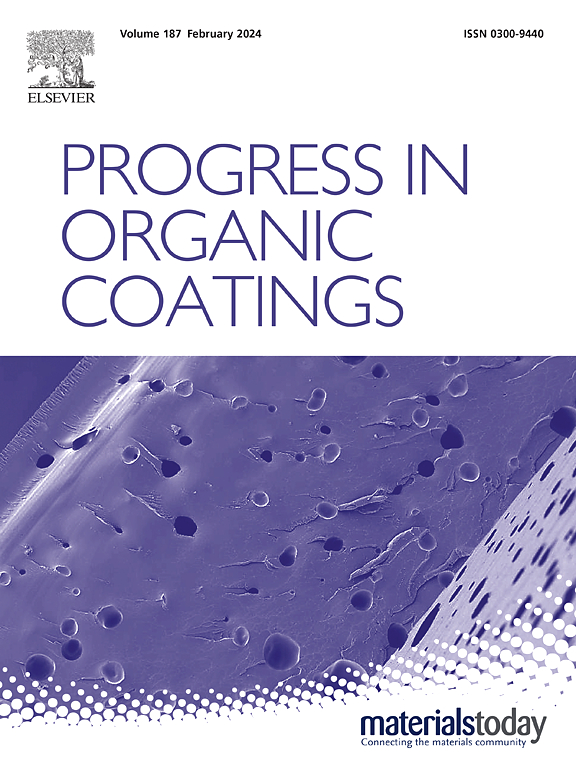Bio-based vanillin-derived nitrogen-phosphorus synergism: A sustainable flame-retardant strategy for high-performance thermoplastic polyurethane
IF 7.3
2区 材料科学
Q1 CHEMISTRY, APPLIED
引用次数: 0
Abstract
The increasing use of thermoplastic polyurethane (TPU) in wearable electronics, electric vehicle cable sheathing, and flexible building materials, yet raises pressing safety and environmental concerns due to their high flammability and the smoke they emit in a fire. Traditional flame retardants often pose trade-offs in toxicity, sustainability, or mechanical performance, highlighting the need for cleaner, bio-based solutions. In this work, we report a vanillin-derived nitrogen–phosphorus flame retardant (PVD) that addresses these challenges through a green and efficient strategy. Incorporating only 4 wt% PVD into TPU achieves a UL-94 V-0 rating and enhances the limiting oxygen index (LOI) to 27.3 %. At 6 wt%, the TPU/PVD composite reduces peak heat release rate (PHRR) and total smoke production (TSP) by 33.7 % and 43.2 %, respectively, with enhancing mechanical properties. The enhanced flame retardancy of TPU/PVD composites is attributed to a dual-phase mechanism. In the condensed phase, nitrogen and phosphorus elements synergistically promote the formation of a thermally stable, graphitized char layer rich in P![]() O and P
O and P![]() O structures, which acts as a physical barrier to heat and mass transfer. In the gas phase, flame inhibition occurs through the quenching of active radicals (e.g., PO
O structures, which acts as a physical barrier to heat and mass transfer. In the gas phase, flame inhibition occurs through the quenching of active radicals (e.g., PO![]() and PO2
and PO2![]() ) and dilution of flammable gases by non-combustible gases such as CO2 and NH3. This approach provides a viable pathway toward sustainable, fire-safe, and mechanically robust TPU materials.
) and dilution of flammable gases by non-combustible gases such as CO2 and NH3. This approach provides a viable pathway toward sustainable, fire-safe, and mechanically robust TPU materials.

生物基香草素衍生的氮磷协同作用:高性能热塑性聚氨酯的可持续阻燃策略
热塑性聚氨酯(TPU)在可穿戴电子产品、电动汽车电缆护套和柔性建筑材料中的使用越来越多,但由于其高可燃性和在火灾中排放的烟雾,引发了紧迫的安全和环境问题。传统的阻燃剂通常会在毒性、可持续性或机械性能方面做出权衡,这凸显了对更清洁、生物基解决方案的需求。在这项工作中,我们报告了一种香草素衍生的氮磷阻燃剂(PVD),该阻燃剂通过绿色高效的策略解决了这些挑战。仅在TPU中加入4 wt%的PVD即可达到UL-94 V-0额定值,并将极限氧指数(LOI)提高到27.3%。在重量为6 wt%时,TPU/PVD复合材料的峰值热释放率(PHRR)和总烟雾产量(TSP)分别降低了33.7%和43.2%,同时提高了机械性能。TPU/PVD复合材料阻燃性能的增强是由双相机理引起的。在凝聚相中,氮和磷元素协同促进形成热稳定、石墨化的富含PO和PO结构的炭层,作为传热传质的物理屏障。在气相中,通过猝灭活性自由基(如PO和PO2)和用不可燃气体(如CO2和NH3)稀释可燃气体来抑制火焰。这种方法为实现可持续、防火安全、机械坚固的TPU材料提供了一条可行的途径。
本文章由计算机程序翻译,如有差异,请以英文原文为准。
求助全文
约1分钟内获得全文
求助全文
来源期刊

Progress in Organic Coatings
工程技术-材料科学:膜
CiteScore
11.40
自引率
15.20%
发文量
577
审稿时长
48 days
期刊介绍:
The aim of this international journal is to analyse and publicise the progress and current state of knowledge in the field of organic coatings and related materials. The Editors and the Editorial Board members will solicit both review and research papers from academic and industrial scientists who are actively engaged in research and development or, in the case of review papers, have extensive experience in the subject to be reviewed. Unsolicited manuscripts will be accepted if they meet the journal''s requirements. The journal publishes papers dealing with such subjects as:
• Chemical, physical and technological properties of organic coatings and related materials
• Problems and methods of preparation, manufacture and application of these materials
• Performance, testing and analysis.
 求助内容:
求助内容: 应助结果提醒方式:
应助结果提醒方式:


